Philippines
- Written by Lovely
Which kind of waste bins do you have in your household?
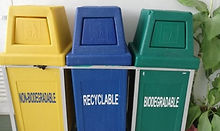
Recycling bin in Philippines (Image: PNA/ Gail Momblan)
Households are encouraged to segregate waste into at least three bins:
-
Biodegradable
-
Recyclable
-
Non-recyclable
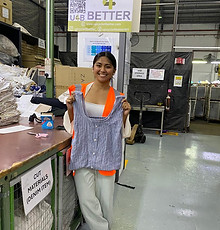
Where do people usually buy or sell secondhand clothes?
Online platforms like Carousell, Shopee, Facebook Marketplace, and Instagram are increasingly popular for buying preloved clothes.
Ukay-ukay stores are the most iconic. Originating in Baguio, they now operate nationwide, offering imported secondhand clothes at low prices.
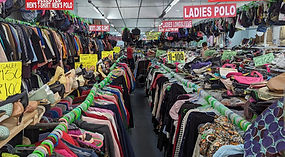
Ukay-ukay shops in Cubao, Quezon City. (Image: SPOT.ph/ Mia Rodriguez)
How many pieces of clothes does the average person in Philippines own?
On average, Filipino adults have about 90 to 100 clothing items, though many believe their wardrobe only holds 50 to 60 pieces. Each year, they typically add 3 to 5 new garments, often driven by fast fashion trends and the local “tingi” habit of making small, frequent purchases.
What is one thing that your country could learn from Malaysia/ U4B?
In the Philippines, most discarded clothing ends up in landfills with little organized recycling, and U4B shows that textile waste can be managed in a way that is both environmentally responsible and socially inclusive, creating awareness, opportunities for income, and a culture of sustainability. Seeing how a simple initiative can make such a big difference makes me hope my country can adopt something similar.
Which facts shocked you during your research?
What really shocked me is how much textile waste ends up in the Philippines landfills. The country doesn’t have a formal circularity policy for clothes and because Ukay-Ukay a thrift shops selling secondhand clothes imported from richer countries is so popular, when these clothes are unsellable, they are often dumped, turning the Philippines into a dumping ground for discarded clothing from other nations.
What are some national campaigns or organizations in your country promoting textile recycling or reuse?
While there’s no nationwide textile recycling system, several governments led, and corporate initiatives are making progress:
-
DOST regional programs in places like Taytay, Rizal, support recycling garment factory scraps into yarn for local weaving industries.
-
Major retailer SM launched Tela Tales, upcycling condemned linens into new products, converting 1,716 yards of fabric as part of its broader #SMWasteFreeFuture campaign.
Tela Tales: SM Hotels’ program turning hotel linens into handcrafted goods. (Image: SM Hotels & Conventions Corp.)
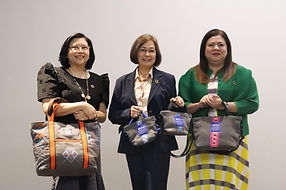
What kind of textile waste recycling points exist in Philippines?
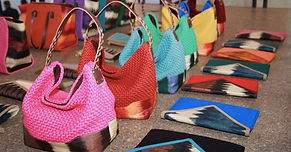
Textile recycling in the Philippines is not yet systemic or large-scale, but there are promising localized projects:
-
Rags2Riches, TenTwentyKids, and Retaso drive grassroots upcycling.
-
RYPIC and PET-based initiatives expand material innovation.
Together, they represent growing momentum toward a more sustainable, circular textile economy in the country.
Rags to Riches’: exploring fashion-led opportunities from upcycling and sustainability. (Image: Rappler).
How much textile waste is generated in Philippines? How much ends up in landfills, how much is recycled?
Textile waste accounts for approximately 1.61 % of the Philippines' municipal solid waste, estimated at ~267,711 tonnes annually. Most of the textile waste ends up in landfills or dumps, due to the lack of large-scale collection systems leaving no formal pathway for reuse or processing. No formal circularity policy yet, but the government is piloting incentives and programs including R&D support for textile recycling under broader waste management initiatives.
References
SM Rolls Out Waste Segregation Bins In 75 Department Stores Nationwide | OneNews.PH. (2024). SM Rolls out Waste Segregation Bins in 75 Department Stores Nationwide | OneNews.PH. https://www.onenews.ph/articles/sm-rolls-out-waste-segregation-bins-in-75-department-stores-nationwide
Martelino, A. (2022). Making a Case for the Pre-Loved: Why Secondhand Shopping Is the Better Online Habit. SPOT.PH. https://www.spot.ph/shopping/the-latest-shopping/89331/the-where-how-and-why-of-secondhand-shopping-in-manila-a3440-20220522-lfrm
Isla, R. (2024, May 22). Less Clutter, More Cash: Where to Sell Old Clothes in the Philippines. Moneymax.ph; Moneymax. https://www.moneymax.ph/personal-finance/articles/where-to-sell-old-clothes
Philippines Graphic, & Philippines Graphic. (2024, September 6). SM rolls out Waste Segregation Bins in 75 Department Stores Nationwide - Philippines Graphic. Philippines Graphic. https://philippinesgraphic.com.ph/2024/09/06/sm-rolls-out-waste-segregation-bins-in-75-department-stores-nationwide
Ogerio, B. A. (2005, February 4). Philippines has no specific textile circularity policy [Review of Philippines has no specific textile circularity policy]. Business Mirror. https://businessmirror.com.ph/2025/02/04/philippines-has-no-specific-textile-circularity-policy/
Mobility Foresights. (2025). Philippines Textile Recycling Market Size and Forecasts 2031. Mobility Foresights. https://mobilityforesights.com/product/philippines-textile-recycling-market
I'm a paragraph. Click here to add your own text and edit me

